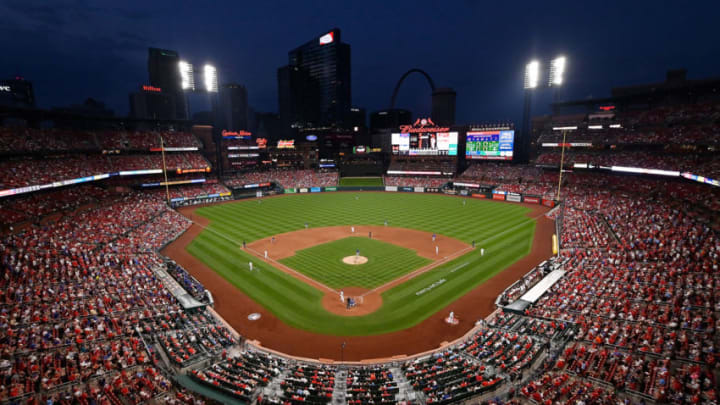The St. Louis Cardinals are considering moving Busch Stadium’s outfield fences in. The effects of that are far larger than they might appear.
Over the past few years, Busch Stadium has become a hitter’s nightmare. The stats back it up — its park factor of 95 puts it behind only Seattle’s T-Mobile Park in how heavily it favors pitchers. St. Louis Cardinals president of baseball operations John Mozeliak said in a St. Louis Post-Dispatch article that the hitting suppression has become a competitive disadvantage for the Cardinals and that moving in the fences could be on the horizon.
I can’t overstate how big and complex of a change that would be.
On the surface, it appears fairly clear-cut: Moving in the walls would mean power hitters like Nolan Arenado and Paul Goldschmidt would blast more dingers. The Cardinals’ offense would be better. The team would be more fun to watch for many fans.
For those who think about it a little more, they’ll realize it would come at a cost: The pitching, long a strength of the team, wouldn’t be as effective. The team’s current rotation, comprising mostly pitch-to-contact guys, would be exposed. Adam Wainwright has benefited immensely from Busch’s pitcher-friendly atmosphere. So have Jon Lester, J.A. Happ, Luis Garcia and T.J. McFarland.
If the fences were moved in, these guys who rely on getting outs on balls in play would not be as consistent. What are currently routine fly balls could be out of the ballpark. To put it simply, most of the Cardinals’ pitchers aren’t suited for this change.
And that’s why this is such a big decision. If the organization proceeds with bringing in the fences, the Cardinals will have to change their entire scouting philosophy. They’ll look for more hitters who can do damage, and they’ll look for guys who throw gas and whiff batters at ridiculous rates. The Cardinals will have to move away from what makes them comfortable now in the draft.
It wouldn’t end at the draft, though; the Cardinals would also have to figure out how to develop their young players so hitters can take advantage of the shallower dimensions and pitchers can mitigate them. This could require adjustments to launch angles and pitching strategies. Even players in the outfield will have to get used to having less room to track down fly balls.
Speaking of outfielders, a shallower Busch Stadium would be detrimental to speedy outfielders such as Tyler O’Neill and Harrison Bader. Less room means they won’t be able to utilize their speed as much, and there will be more parity between slower outfielders and fast ones when it comes to making plays.
Finally, the Cardinals would have to adjust their strategies when trading for players. I’ll admit that it never crossed my mind when the trades occurred, but the front office’s decision to acquire the pitch-to-contact guys likely involved their knowledge of Busch Stadium’s propensity to keep balls in the ballpark. I can see players like Bader and O’Neill being valued less and being traded for guys with more power but less fielding acumen.
The people in the Cardinals’ front office should think long and hard before deciding to bring in the fences, because the effects it would have are enormous. They need to decide if they’re ready to shift the values and priorities of the organization in scouting, developing and trading players. If the Cardinals want to optimize their strengths by moving in the fences, they can’t just make the field smaller and call it a day. It will take a lot of work to shift the foundations the team is built upon.
